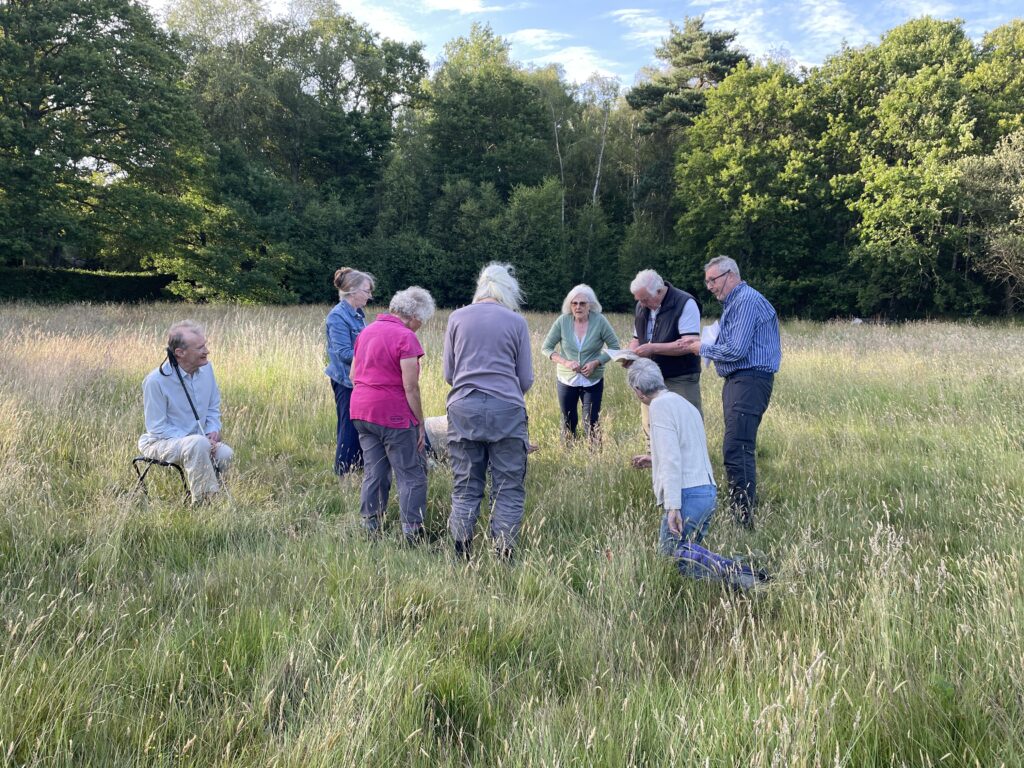
As part of our EcoChurch programme, and in partnership with the Scaynes Hill Sustainability Group, Margaret leads us on a botanical survey of The Common each year. Here in the photo we are all enjoying a beautiful evening looking at wild flowers.
Margaret writes:
10 people helped with the botanical survey on Scaynes Hill Common on 27 June this year. Special thanks to Karen Arnold for taking down the record.
We recorded from 3 quadrats. Quadrat 3 contained 16 species which was many more than the first 2 quadrats.
I put the data we collected into the Match computer programme and this gave a good match for MG5c (coefficient of similarity 46.8). This is Crested Dogstail – Knapweed grassland found on neutral soils which have not been subjected to agricultural improvement. The “c” sub-community is the one occurring on the more acidic soils within this range. We found plants typical of acidic soils such as Tormentil, Heath Speedwell and Heath Bedstraw.
The Match computer programme also gave a very similar coefficient of similarity for MG1e which is False-oatgrass-knapweed grassland. We found a lot of knapweed in quadrat 3 and some False Oatgrass. This is a plant community often associated with un-mown and un-grazed grassland such as that found on roadside verges.
We found Hairy Tare again this year: a small scrambling annual with tiny white vetch flowers and hairy seed pods containing 2 seeds. This was a new find in 2023.
Last year we were concerned to find bramble in quadrat 1, but fortunately we did not find any this year.
Here is a list of all the plants we recorded:
- Yarrow
- Bent Grass
- Sweet Vernal Grass
- False oat grass
- Common Knapweed
- Cock’s-foot
- Red Fescue
- Heath Bedstraw
- Common Hogweed
- Yorkshire-fog
- Meadow Vetchling
- Common Bird’s-foot-trefoil
- Greater Bird’s-foot-trefoil
- Field Wood-rush
- Tormentil
- Ribwort Plantain
- Meadow Buttercup
- Common Sorrel
- Ragwort
- Lesser Stitchwort
- Devilsbit scabious
- Dandelion
- Red clover
- White clover
- Heath Speedwell
- Hairy Tare
Margaret has a more complete spreadsheet including abundance data, available from her by application to the Parish Office for anybody who would like to see it.


